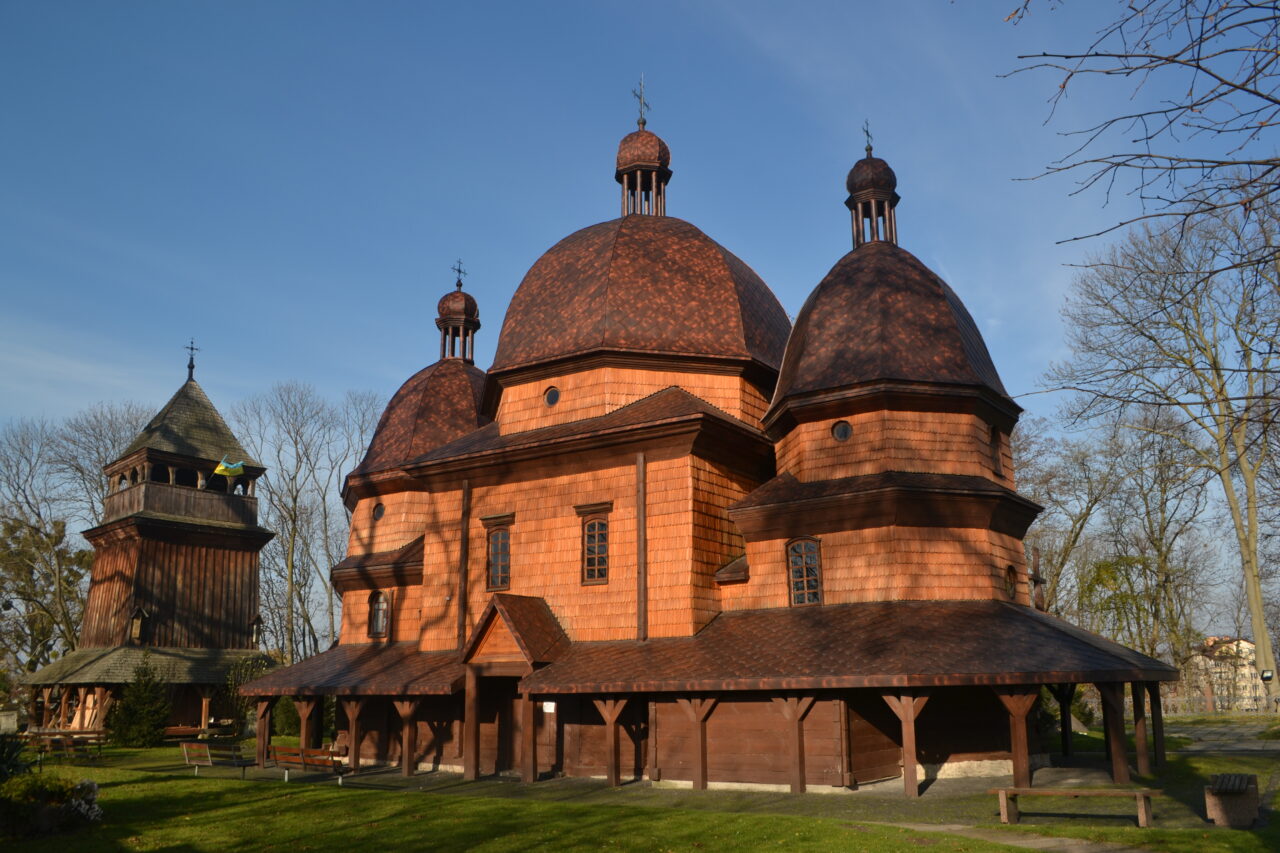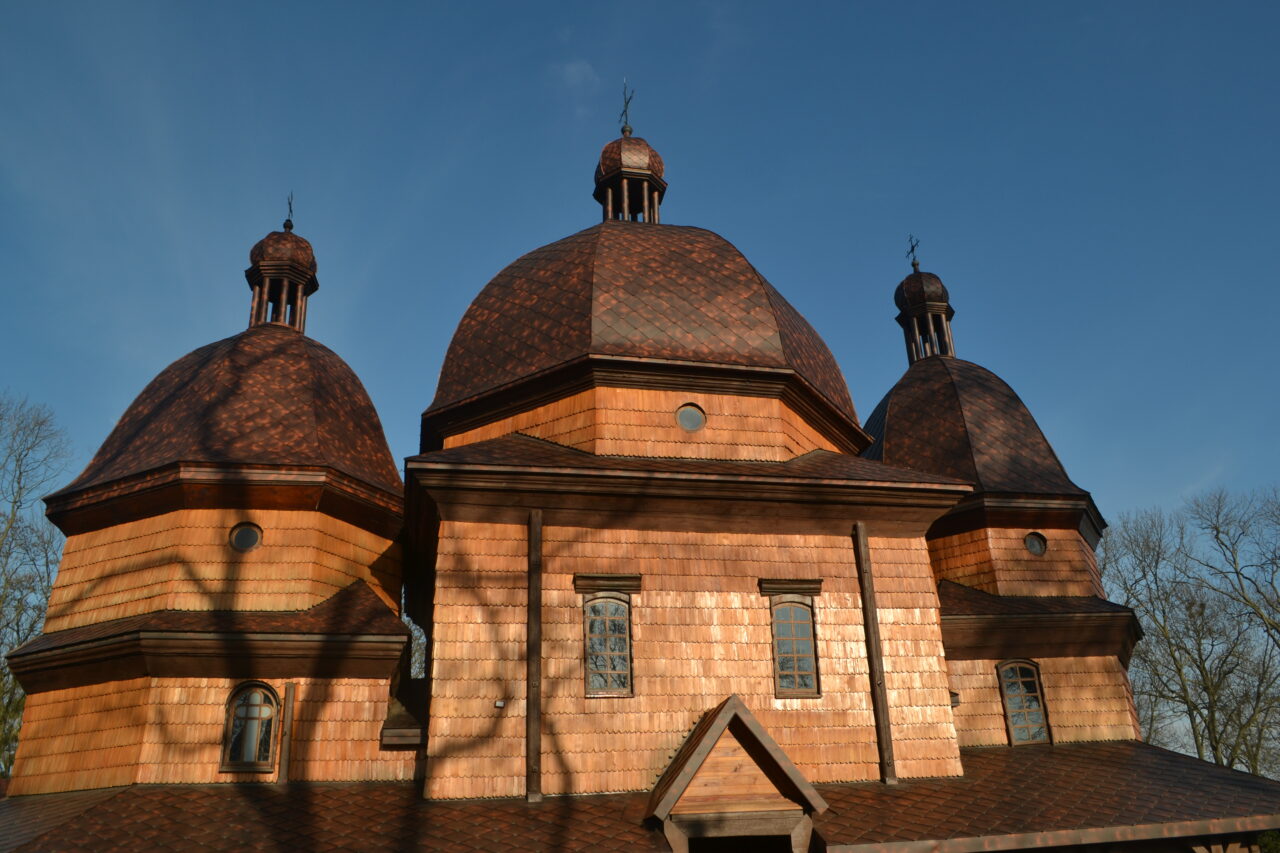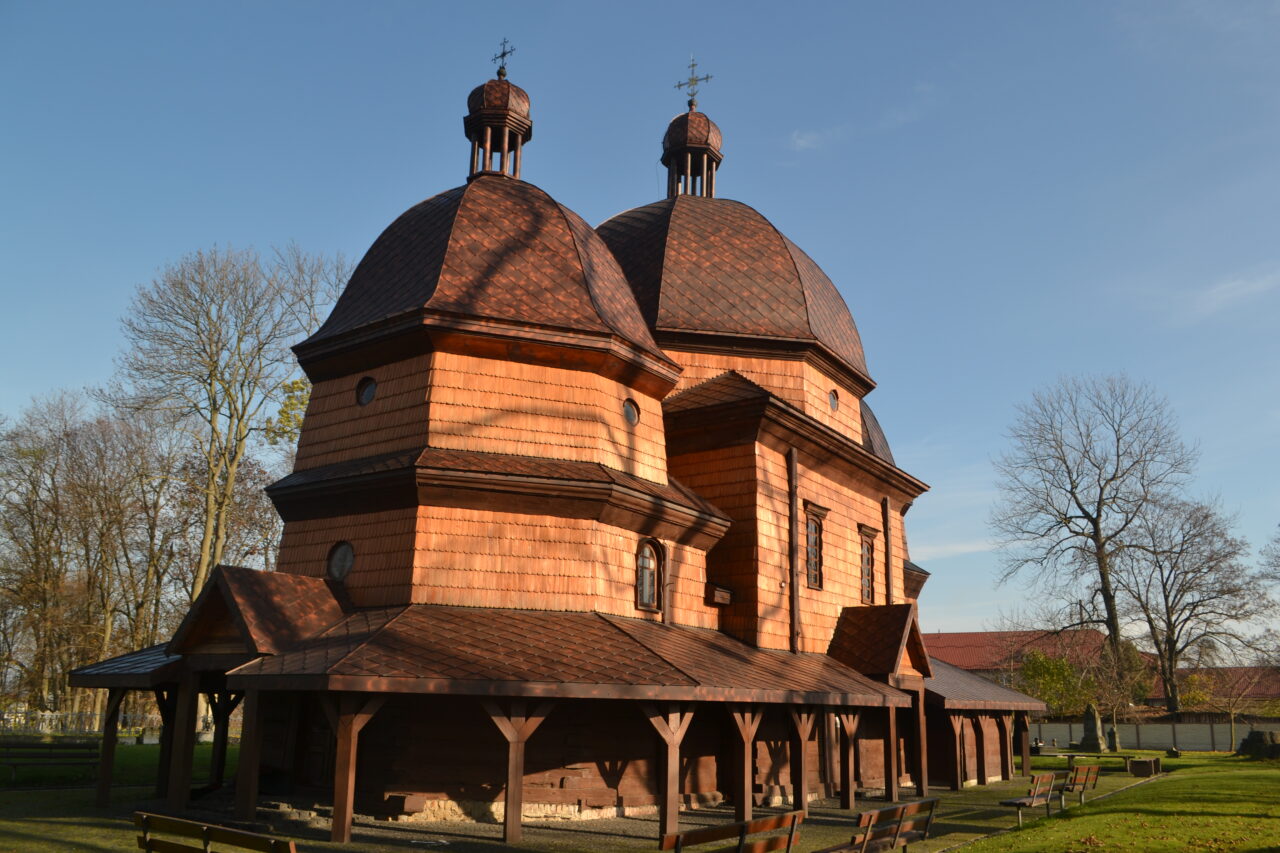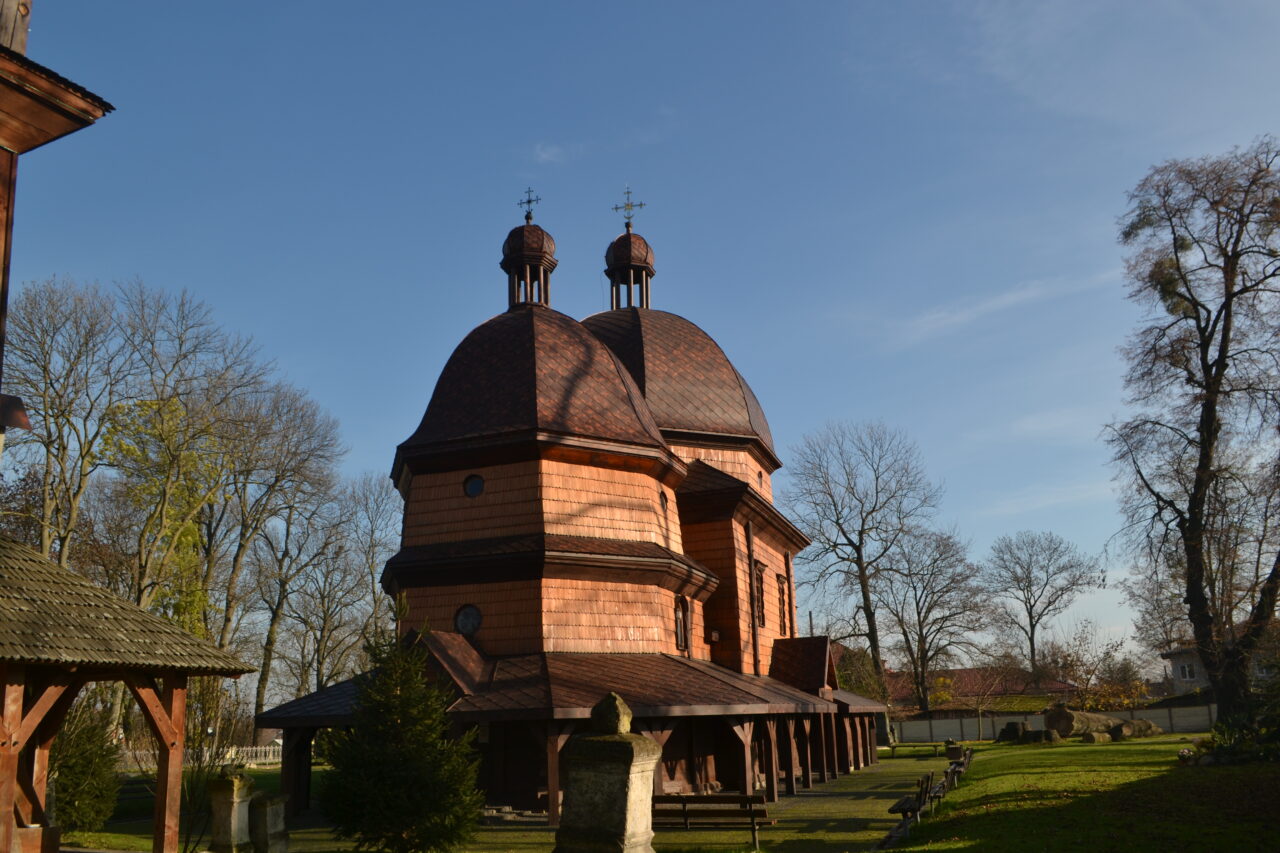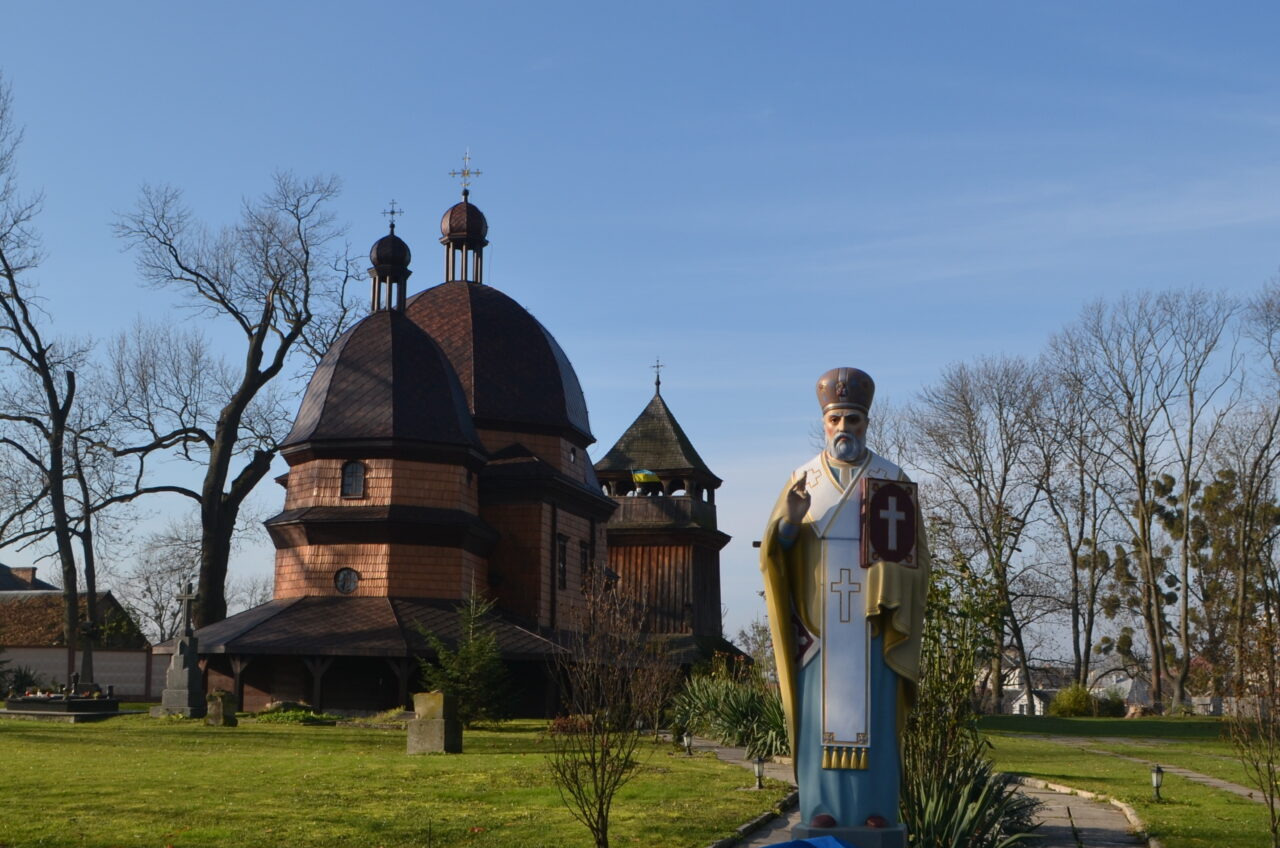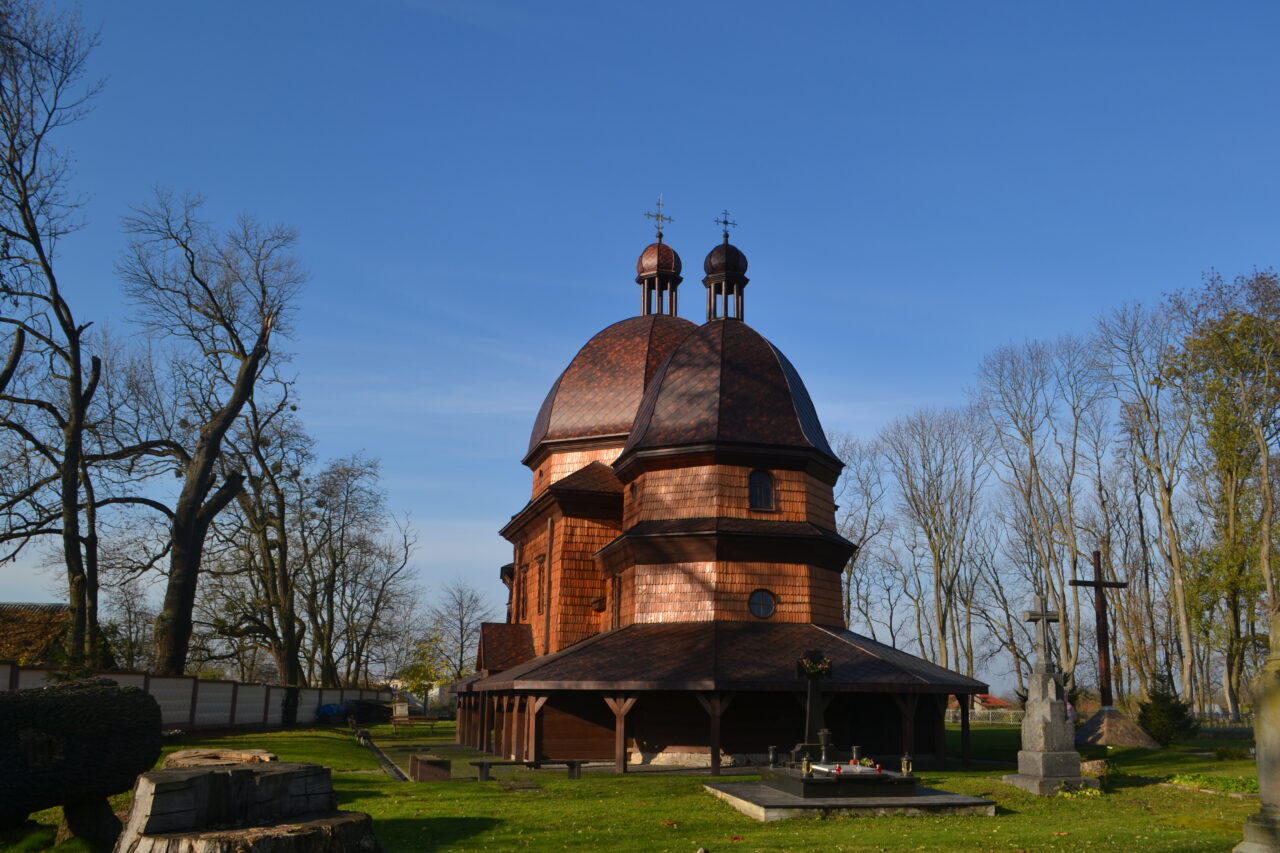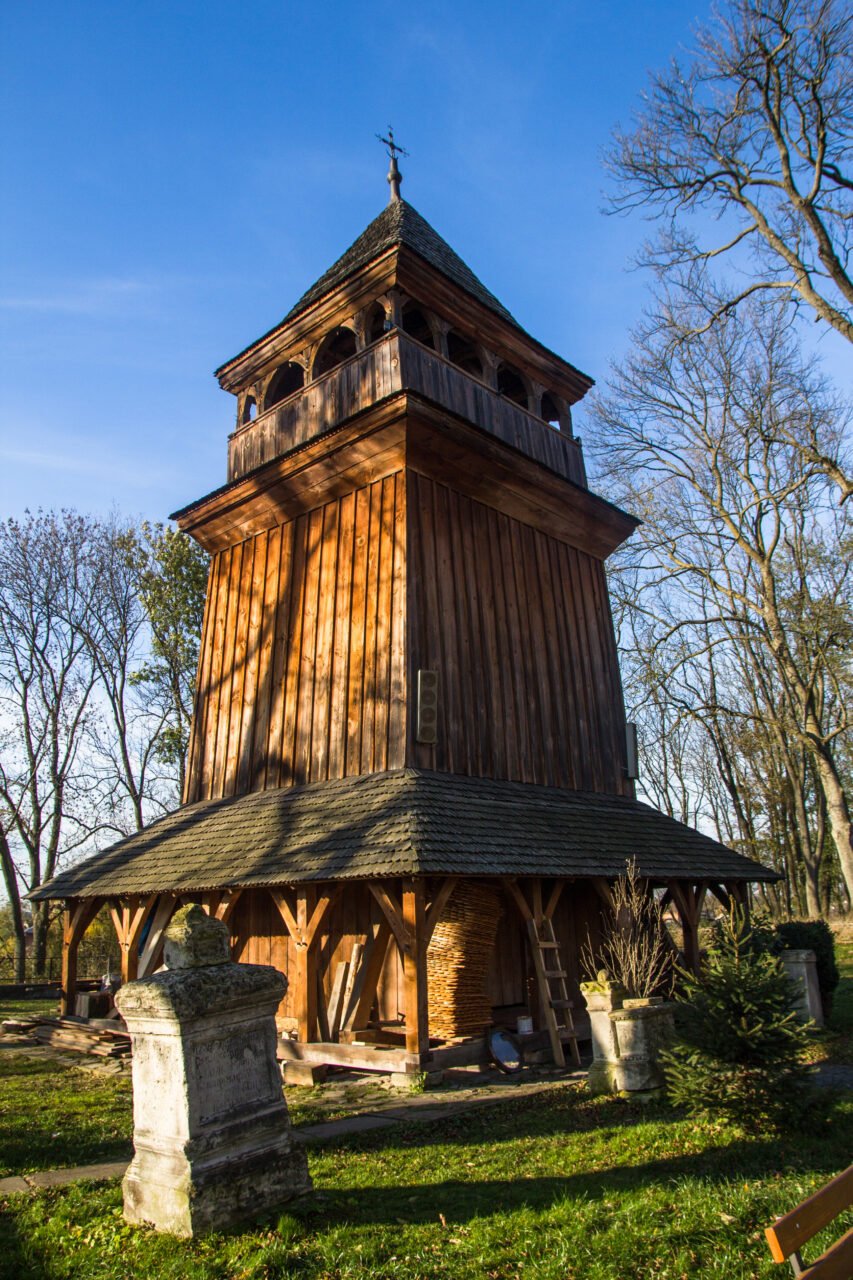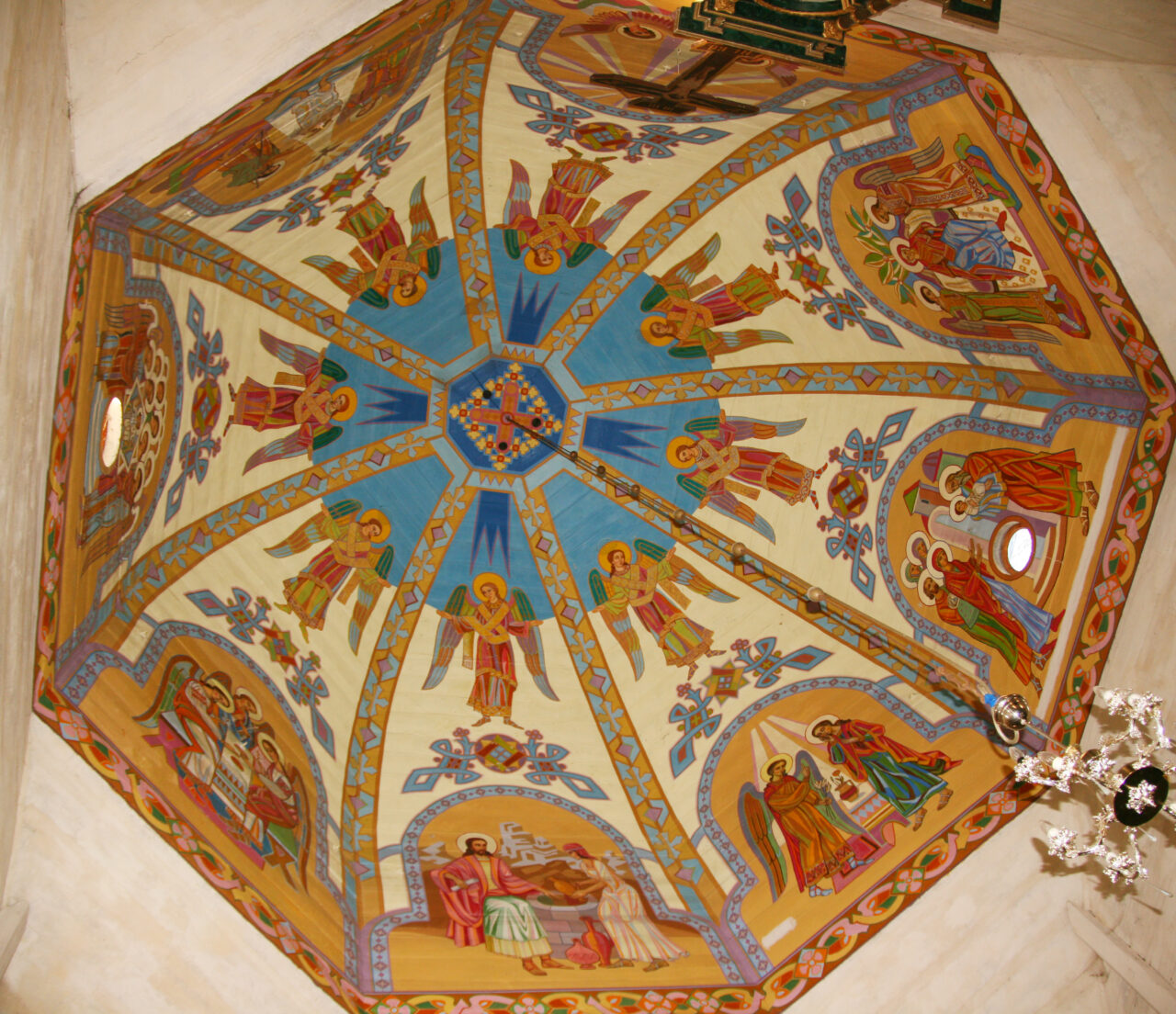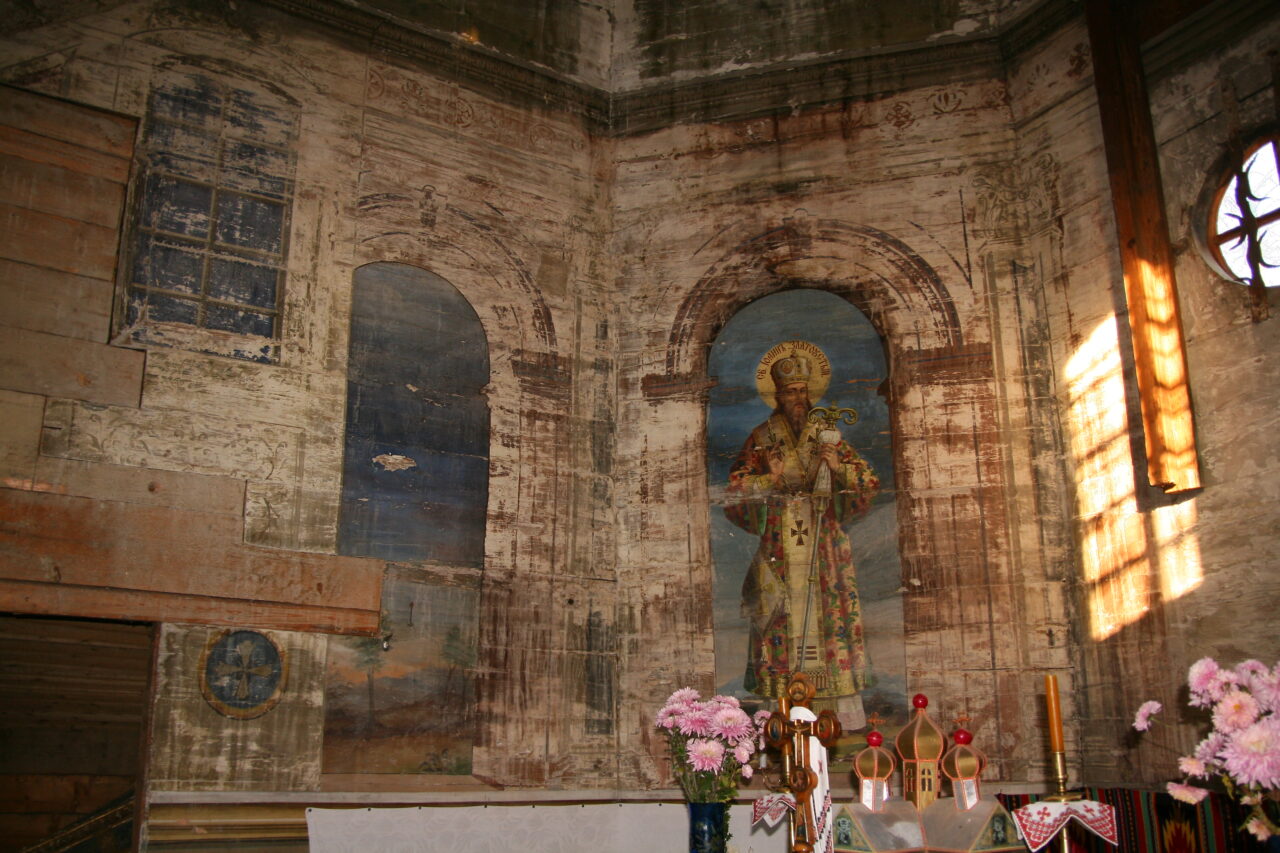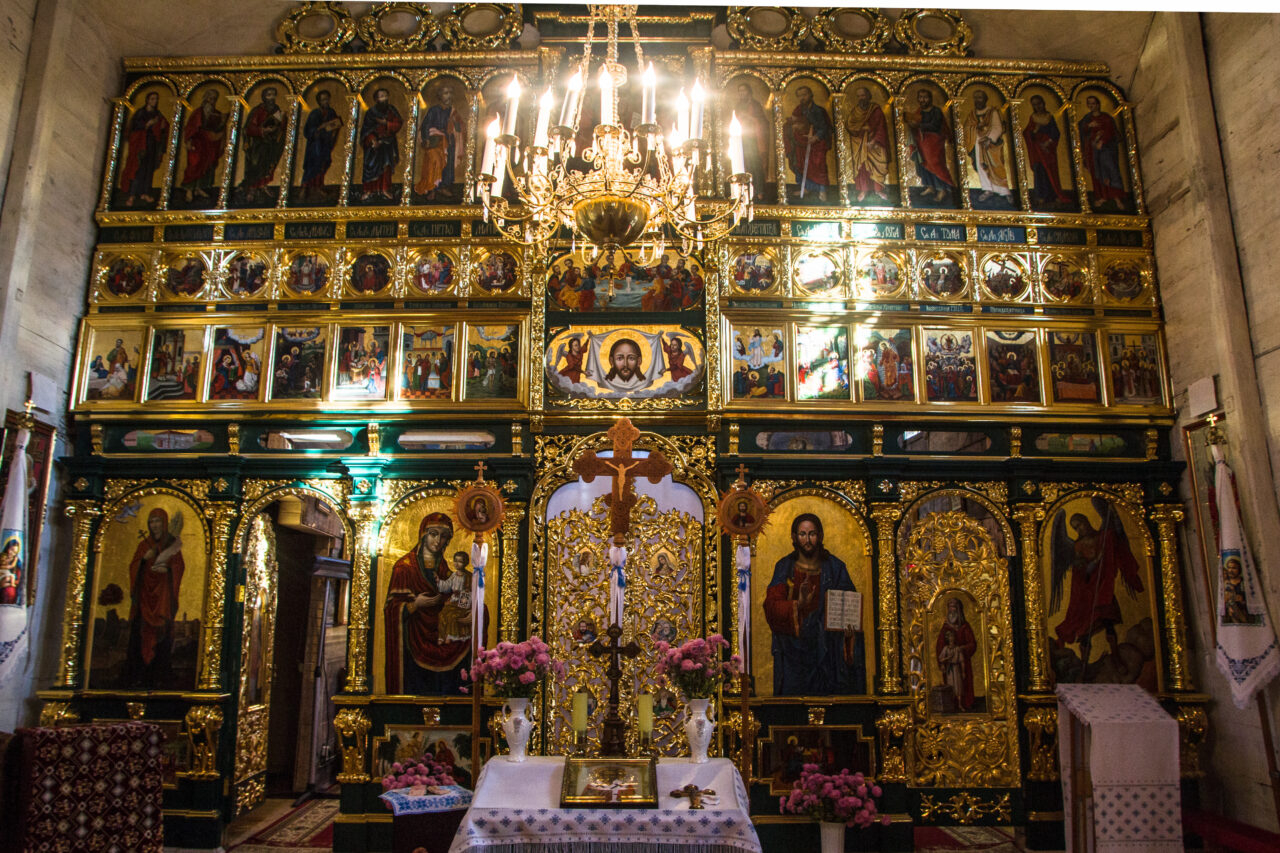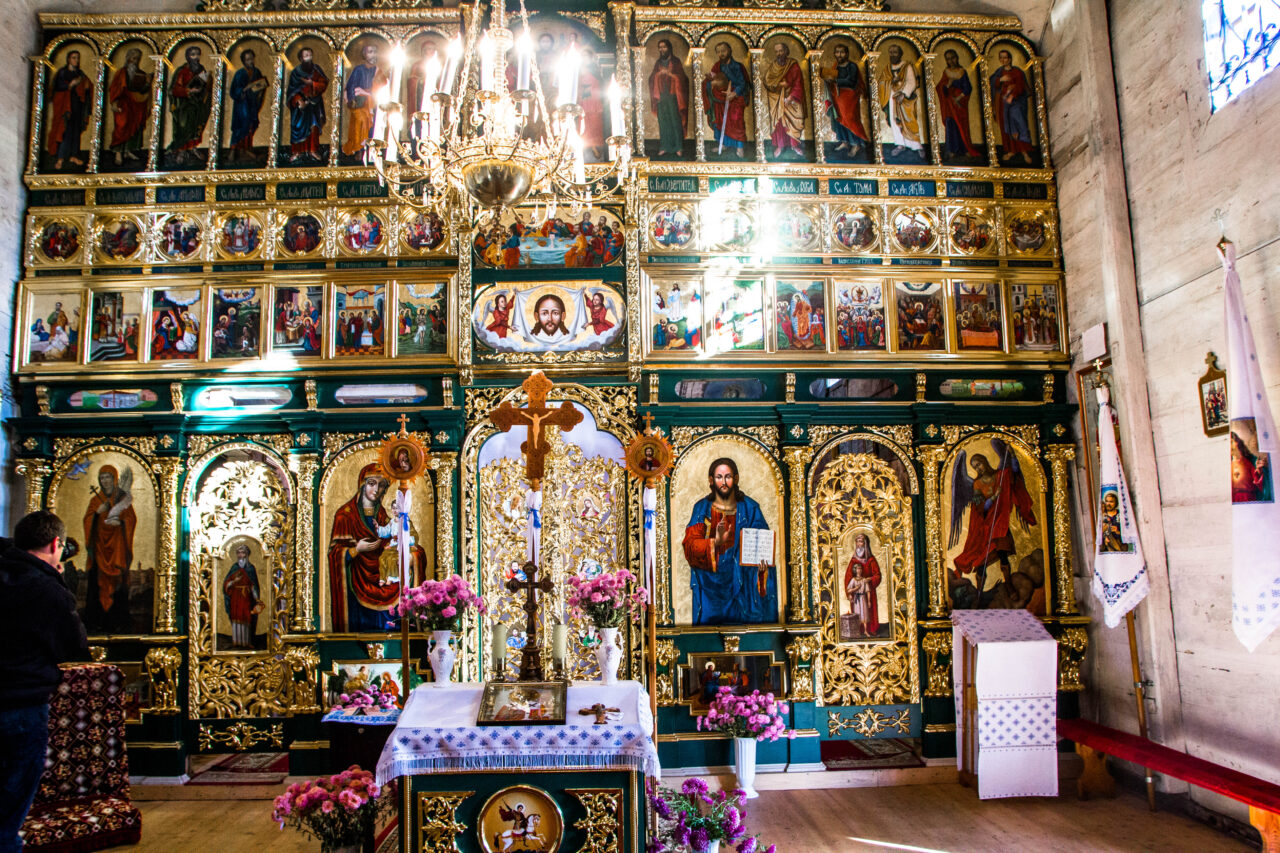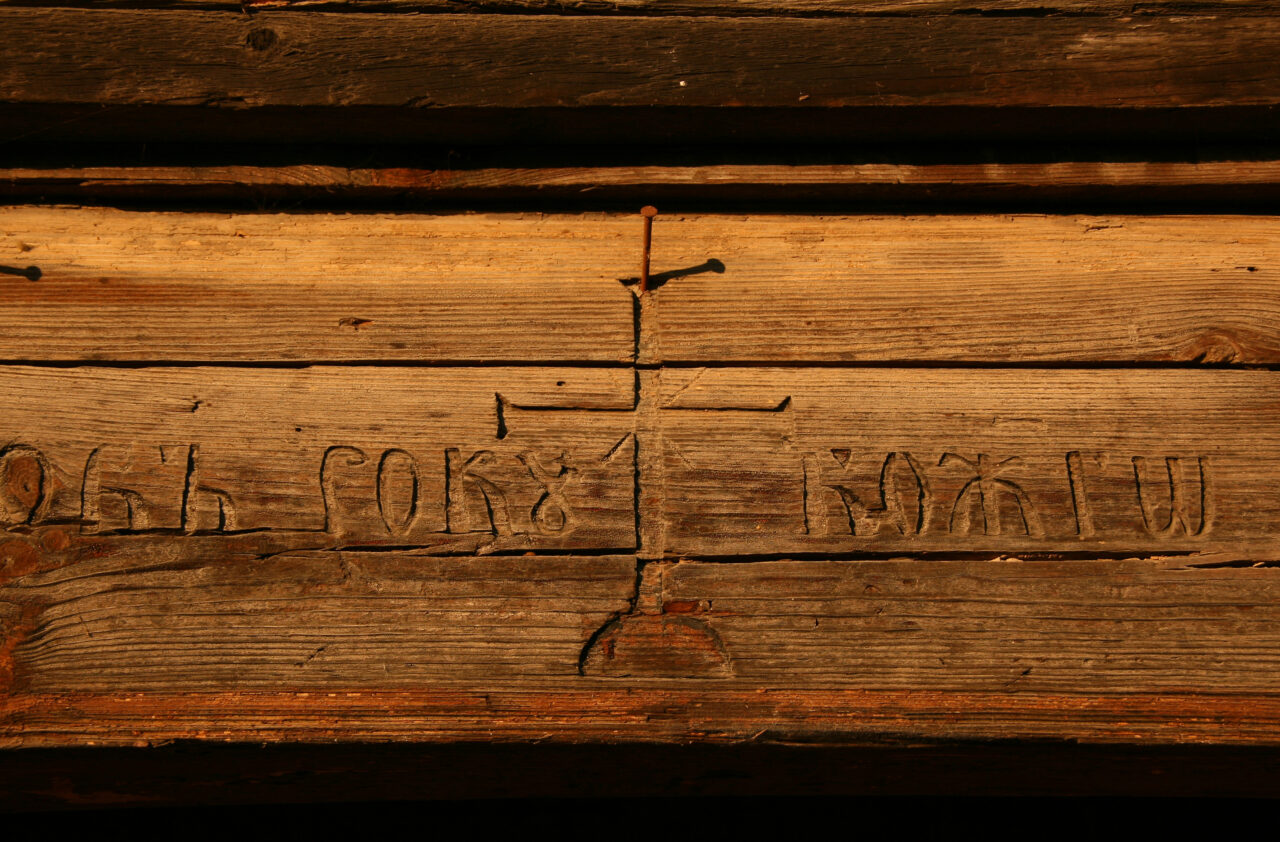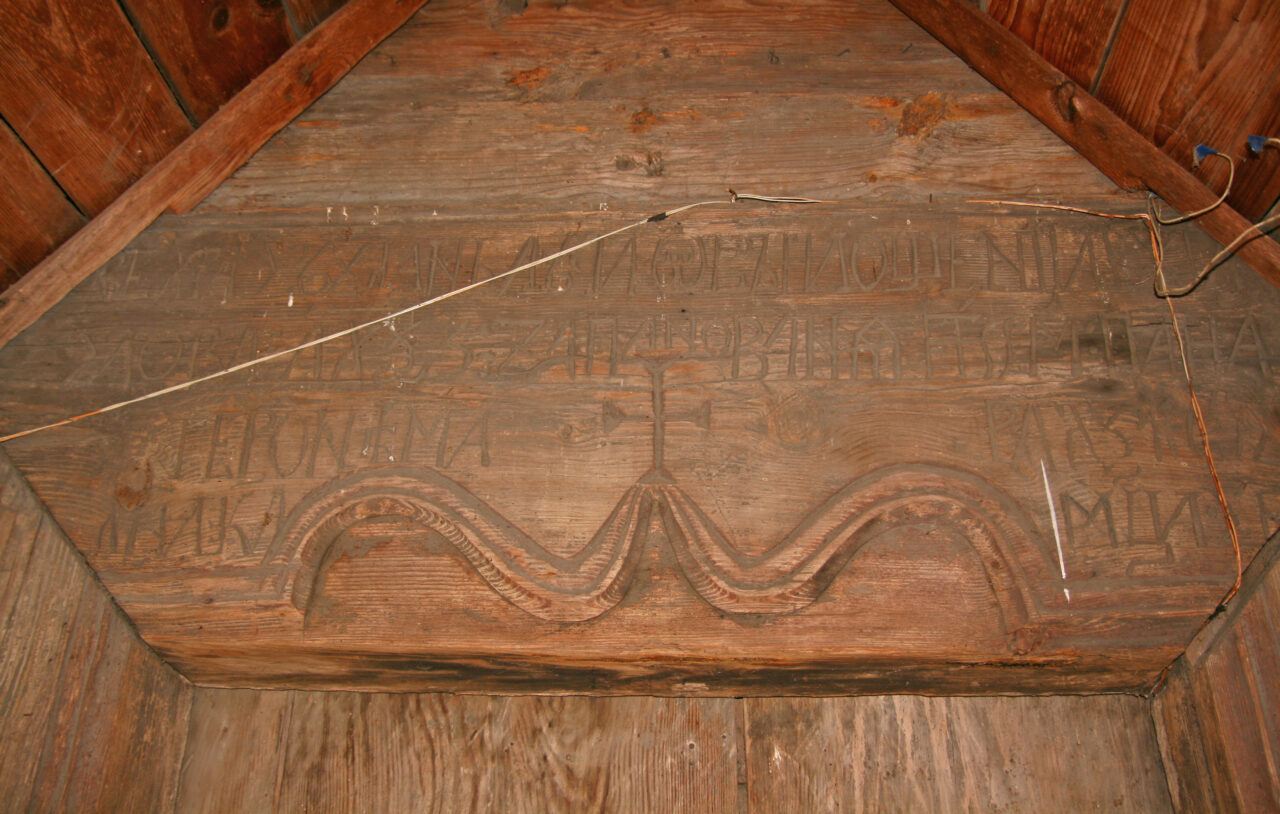Kamianka-Buzka, once known as Kamianka-Strumilowa, is not the most remarkable tourist destination of the Lviv region. For Lviv residents this name of the former district center is most often associated with water supply. There is more than ample supply of water in Kamianka: the Kamianka tributary flows into the River Western Bug. Yes, you guessed it right: the city name comes from the name of the river. The local Aqua Vita, impossible to tell whether it comes from the Buzka or the Kamianka, is sent to the permanently dehydrated Lviv, where the water overhead is full to the brim (legendary Lviv rains!), and is absent under one’s feet (the Poltva River is in the underground captivity, ponds are getting dry and overgrown with duckweed). It’s a watershed!
Nonetheless, the city has some sights for sore eyes of a curious local lore specialists or intellectual tourists. The most visually striking monument is the Neo-Gothic brick Church of the Assumption of the Virgin Mary with high bell tower (1908-1914) designed by talented Theodore Talovskyi. The most well-decorated monument is the Secession tenement building of the Community Hall near the City Hall, the most elegant is the City Hall itself. The oldest building is our central figure, three-log and three-domed, the classical Volyn-style St. Nicholas’s Church.
It is built of pine and oak beams and stands in the midst of the cemetery on a cape-hill towering above the confluence of the rivers Kamianka and Bug. Exactly one kilometer from the city hall, the heart of the new city. This district is the former Belz outskirt, the oldest part of the neighborhood. It was too far for its inhabitants to go and pray all the way in the city center. Thus, the construction of a parish church began (it held its status until 1789). The Cyrillic inscription on the southern doorway of the church was preserved, which helped the historians establish that the building was built in 1667 under the reign of the Kamianka village chief Hieronim Radziejowski: “This church was built in the year of Our Lord 1667 during the governance of His Grace Hieronim Radziejowski on September 21”.
Everything is stated so clearly – what for the researchers to argue about?
The Bishop of Lviv Josef Shumlyansky founded a brotherhood at the St. Nicholas’s Church. This is evidenced by his letter of 27 April 1689. Metropolitan Archbishop Athanasius Szeptycki confirmed this with the following letter in July 1738. In 1789, the church in the Belz outskirt was affiliated to the parish of the city Church of the Nativity of the Virgin Mary.
The age of the oldest church in Kamianka-Buzka is the genuine source of pride: this is proved by the figures 350 on a high two-tiered framed bell tower with hipped roof. If only this pride would result in a sensible and careful attitude to the city’s architectural pride… Sadly, no luck with that: in 2008, a reconstruction of the church began, and in the process the grey metal plates were removed from its tops and ambulatories all around the perimeter and replaced with the modern roof tiles. Not too good of an idea.
It was a rather drastic renovation of the church, but, surely, not the first. The other one took place in 1759. A record of this has also been preserved. It is inscribed over the western door to the porch. Next to it we can see the Psalm 118:20 quote: “This gate of the Lord, into which the righteous shall enter.” In 1867 a stone foundation for the church was built. Did you guess? There is ALSO an inscription about it on the wall of the church. The church restorations in 1962 (by Igor Starosolsky) and 1971 (by Liudmila Dmytrovych) were already documented on paper.
A real treasure of the church was the 17th-century five-tiered iconostasis. Some of the icons have been lost during 400 years since art has always been highly valued on the black market. During the analysis of the survived icons in 1971, the date “1618”, written in Cyrillic and Arabic numerals was found. It means that some parts of the iconostasis are older than the building itself. The apostolic series of icons dates back to the very construction of the church, while the scenes of Pentecost – to the early 20th century. It is known that in 1898 the iconostasis was remade. Several valuable icons disappeared during the Soviet period. Later, the iconostasis was taken away for restoration and given back in 2018, completely modern and new, made in the style of the old. But the remnants of the glue mural paintings of Josef Sydorovych date back to 1905.
The bell tower of the church made of oak logs dates back to 1762, according to the inscription on the threshold of the pine door. Although it may well be that this was the date of the renovation, made during the reign of Stefan Sydorovych. In 1880, the bell tower was restored by artist Andriy Horontsiy. The same person who built the church in Nahirtsi village of the Zhovkva region. This same architect added sacristy to St. Nicholas’s Church in Kamianka-Buzka.
The church was badly damaged during World War I. In the Soviet times, it hosted a museum, but nowadays the church belongs to the Ukrainian Greek Catholic Church.

